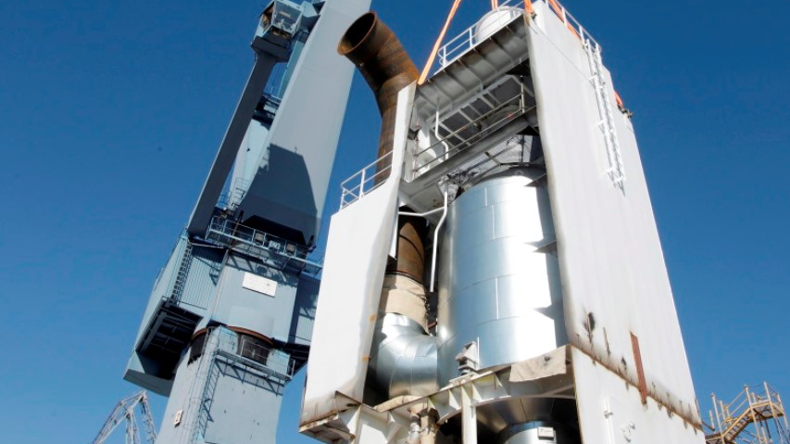




THE price spread between very low sulphur fuel and high-sulphur fuel oil is widening once again, adding benefits to scrubber users.
While the current spreads are significantly higher than where they were in mid-2020, they are well below levels seen before the coronavirus pandemic sapped demand.
Wood Mackenzie expects fuel spreads to continue to widen in 2021, although modestly, as oil demand recovers and the HSFO crack spread, or differential to oil, grows.
Its head of refining, chemicals and oil Alan Gelder said that, according to his calculations, the VLSFO-HSFO differential is estimated to widen to $150 per tonne on average for the fourth quarter of 2021, and remain around that level in 2022.
“The higher demand for oil products requires higher crude runs in less sophisticated refineries (that have a higher yield of fuel oil) with a heavier global crude slate,” he said, as the Organisation of the Petroleum Exporting Countries plus co-operating non-members increase supplies of medium and heavy crude to maintain a balance in the global oil market.
Fuel spreads were narrow in 2020, when HSFO in Singapore, at times, was priced at a premium to Brent crude oil, as it was in such tight supply, according to Woodmac.
However, VLSFO was one of the “best performing” refined products during 2020 based on its crack spread, in comparison to transport fuels such as gasoline and diesel, resulting in the VLSFO-HSFO spread weakening to below $55 per tonne for the November 2020 monthly average in Singapore.
For the fourth quarter of 2020, VLSFO averaged a premium to HSFO of about $60 per tonne in Singapore.
As of the start of this year, the differential in Singapore was at $96.50 per tonne, according to Argus media data. In Rotterdam, the spread hit $87.25 per tonne.
Other sources pegged the fuel spread in Fujairah at just above $100 per tonne, while in Houston, it was around the $88 per tonne mark.
Jefferies said that in the coming quarters, the fuel spread will widen as the global economy recovers, oil prices increase, and bunker fuel oil demand rebounds, “making scrubbers great again”.
The US bank said in a note that 3,700 scrubbers have so far been installed, 1,900 of which were fitted last year. That represents about 20% of the global fleet on a deadweight tonnes basis.
The price of VLSFO has been much lower than expected in 2020 due to the effects of the pandemic, with falling oil prices, excess middle-distillates such as jet fuel, and lower demand for fuel oil by the shipping industry, due to a slowdown in the global economy.
The VLSFO-HSFO fuel spread began 2020 at more than $300 per tonne, and stood at about $85 per tonne in late December.
Statistics from classification society DNV GL, which has the biggest number of scrubbers on its vessels at 700, show that 4,572 are currently registered, comprising those in operation or on order. At the end of 2020, that figure was 4,389. The largest share, about 1,600, was for bulk carriers, followed by containerships at 952.
Eagle Bulk’s chief executive Gary Vogel said late last year that with crude oil at $50 per barrel, the fuel spread had increased to about $100 per tonne on average for 2021 and 2022, which, based on the company’s conservative estimate, would translate to $21m in revenue generation per year.
Last year, Cleaves Securities had calculated that with a spread of $100 per tonne, it would take 2.9 years to recoup the investment in a scrubber for a very large crude carrier and 4.3 years for a suezmax. When the price spread exceeded $300 per tonne, the payback time was reduced to less than a year for a VLCC and just over 12 months for an aframax tanker and capesize bulk carrier.